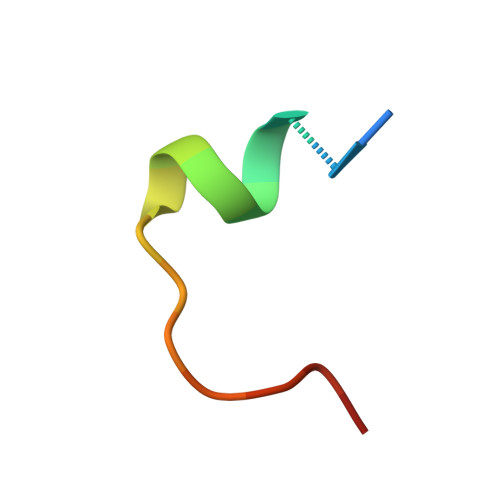A higher-order entity formed by the flexible assembly of RAP1 with TRF2.
Gaullier, G., Miron, S., Pisano, S., Buisson, R., Le Bihan, Y.V., Tellier-Lebegue, C., Messaoud, W., Roblin, P., Guimaraes, B.G., Thai, R., Giraud-Panis, M.J., Gilson, E., Le Du, M.H.(2016) Nucleic Acids Res 44: 1962-1976
- PubMed: 26748096
- DOI: https://doi.org/10.1093/nar/gkv1531
- Primary Citation of Related Structures:
4RQI - PubMed Abstract:
Telomere integrity is essential to maintain genome stability, and telomeric dysfunctions are associated with cancer and aging pathologies. In human, the shelterin complex binds TTAGGG DNA repeats and provides capping to chromosome ends. Within shelterin, RAP1 is recruited through its interaction with TRF2, and TRF2 is required for telomere protection through a network of nucleic acid and protein interactions. RAP1 is one of the most conserved shelterin proteins although one unresolved question is how its interaction may influence TRF2 properties and regulate its capacity to bind multiple proteins. Through a combination of biochemical, biophysical and structural approaches, we unveiled a unique mode of assembly between RAP1 and TRF2. The complete interaction scheme between the full-length proteins involves a complex biphasic interaction of RAP1 that directly affects the binding properties of the assembly. These results reveal how a non-DNA binding protein can influence the properties of a DNA-binding partner by mutual conformational adjustments.
Organizational Affiliation:
Department of Biochemistry, Biophysics and Structural Biology, Institute for Integrative Biology of the Cell (I2BC), CEA, UMR 9198 CNRS, Université Paris-Sud, Batiment 144, CEA Saclay, Gif-sur-Yvette, F-91191, France.

















